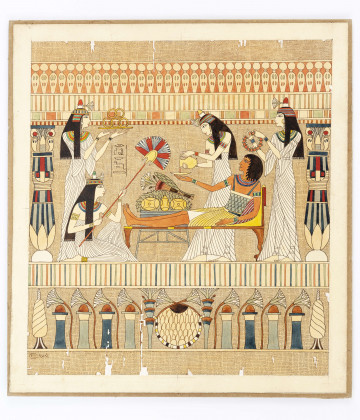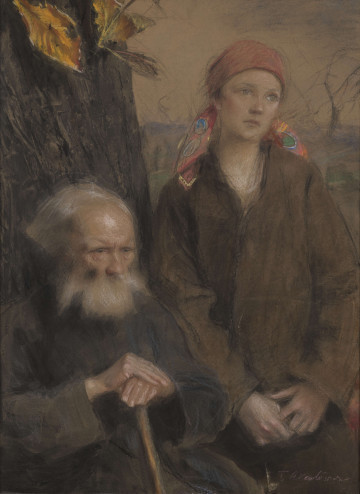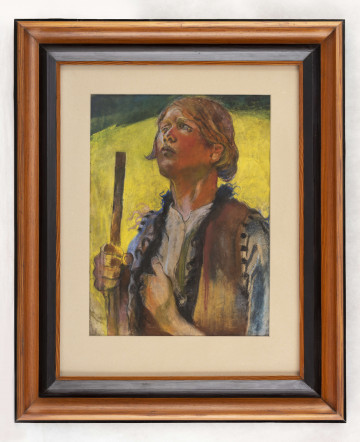
Illustration: `The heir to the throne feasting` to `Pharaoh` by Bolesław Prus
1914 — 1924
National Museum in Lublin
Part of the collection: European classics of modernity
Between 1898 and 1899, Fryderyk Pautsch studied law at the Jan Kazimierz University in Lwów, and then at the Jagiellonian University. The following year he chose to study art under Józef Unierzyński and Leon Wyczółkowski at Kraków's Academy of Fine Arts. At the turn of 1905/1906, he stayed on a scholarship in Paris, where he enrolled in the studio of Jean-Paul Laurens at the Académie Julian. He graduated from his alma mater in 1906 and settled in Lviv. From there, the closest place he had was Pokucie, where since his student days he, together with Władysław Jarocki and Kazimierz Sichulski, observed the Hutsul region - the landscape and life of the Ruthenian-Volossian highlanders. The folk themes taken directly from their folklore contributed to the fact that all three artists were called Hutsuls. The tendency towards Art Nouveau decorativeness was evident in the Szczecin collection's Ofiara wieczorna [Evening Offering]. The composition, also exhibited under the titles W przedwieczorną chwilę [In an Early Evening Moment], Huculi [Hutsuls], Cyganie [Gypsies] or Czarny baran [The Black Ram], gathers figures crowded into a tight frame, compared by critics to ancient Greek heroes: The landscape has become metaphorical. The entire dithyrambic mood of these paintings is concentrated in this bizarre group, where under a golden frieze of sunflowers there is a girl, a Slavic Vestalca, covered with a rich shawl like a king's cloak, and by her side an old Ceres, a peasant woman with a jug, adorned with the fruit of viburnum, a girl with a bowl of apples and a beautiful black-haired boy, holding a black ram. This is an offering of milk, fruit and flocks, a Slavic hecatomb in honour of the immortal Sun god, the radiant Helios (Władysław Witwicki, Fryderyk Pautsch, Sztuki Piękne [Fine Arts] 1927/1928, no 4, p. 132). The alleged primordiality of the Hutsuls was identified by Pautsch with the relics of the oldest history of the whole Slavic region, and the historical importance of folk beliefs, rituals and costumes was to be increased by cross-cultural dependencies.
Szymon Piotr Kubiak
Other names
Evening sacrifice
Author / creator
Dimensions
cały obiekt: height: 141 cm, width: 121 cm
Object type
painting
Creation time / dating
Creation / finding place
Identification number
Location / status

1914 — 1924
National Museum in Lublin

1900
National Museum in Lublin

1901 — 1925
National Museum in Lublin
DISCOVER this TOPIC
National Museum in Lublin
DISCOVER this PATH
Educational path